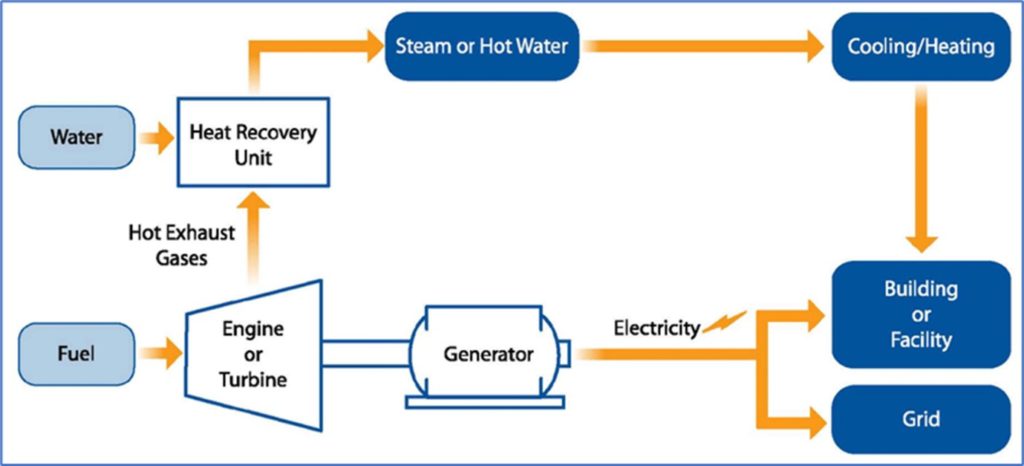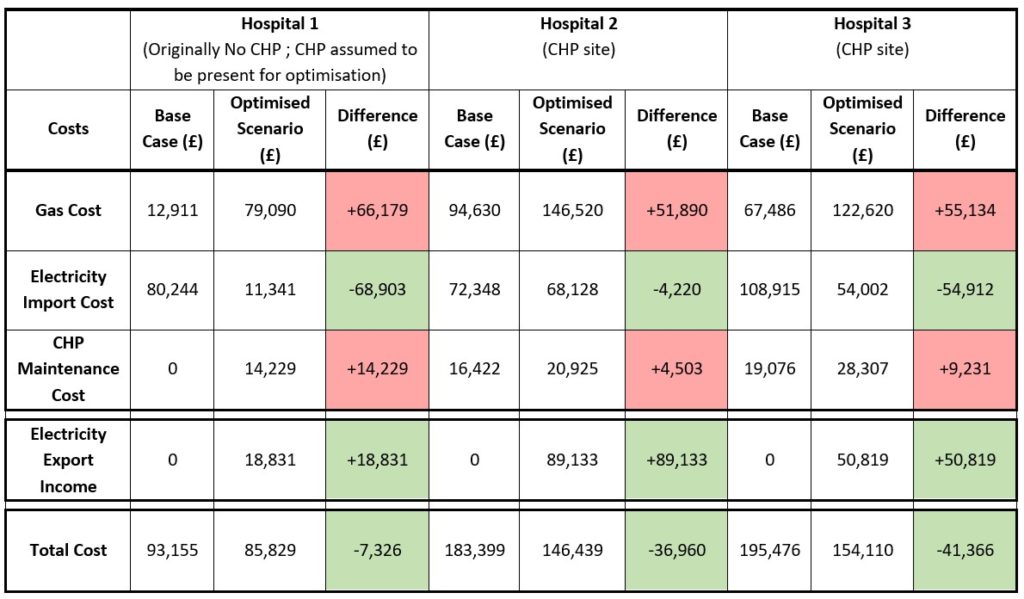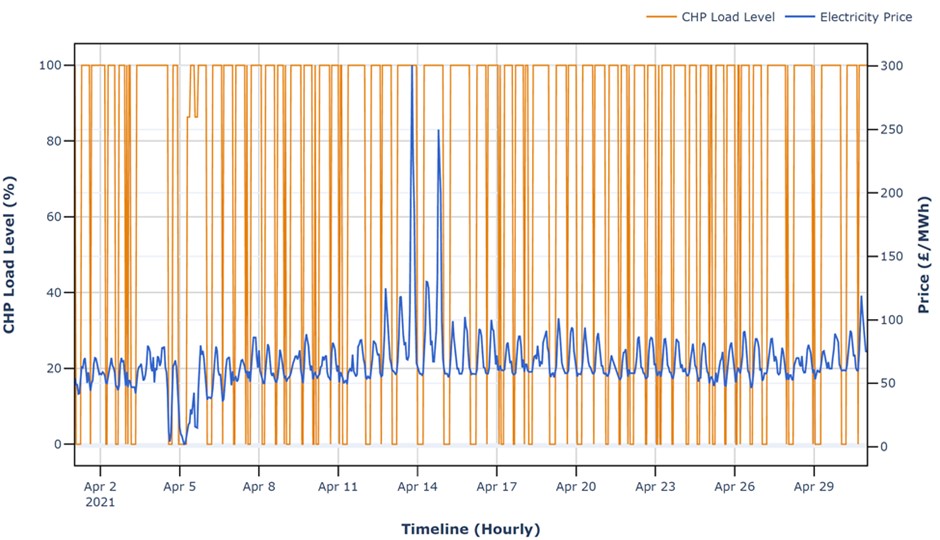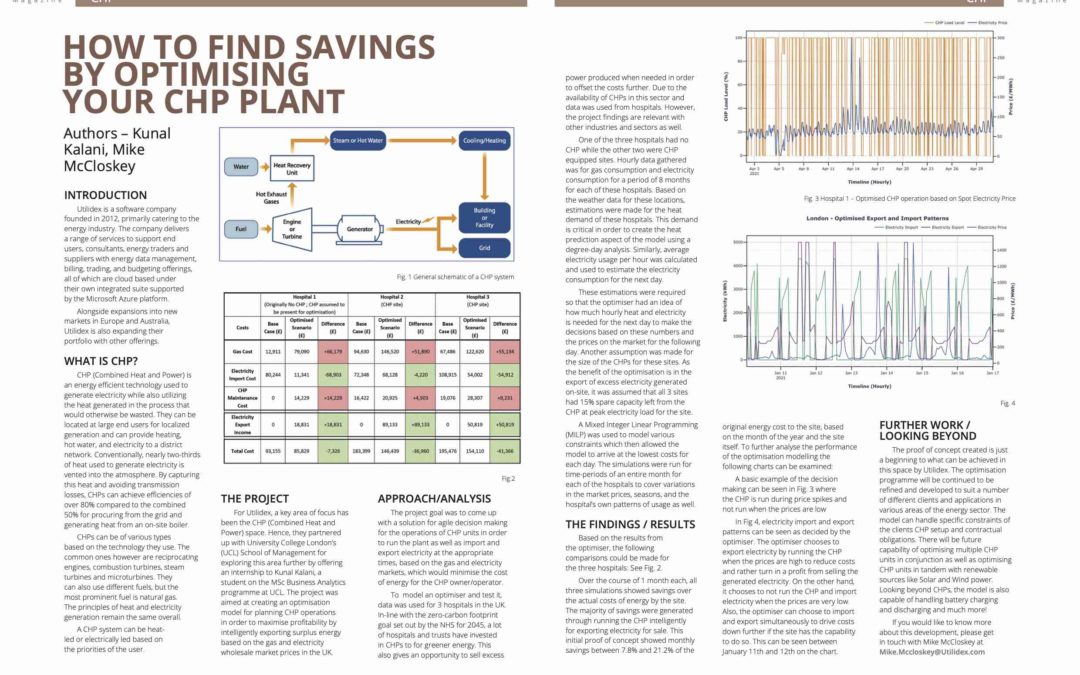Utilidex and UCL School of Management embarked on a research project to explore how CHP operations can be optimised to maximise profitability through exporting surplus energy. In-line with the zero-carbon footprint goal set out by the NHS for 2045, Mike McCloskey (Utilidex) and Kunal Kalani (UCL) used data from 3 hospitals in the UK to model an optimiser and test.
Full article below. To view the article in the EM Magazine, click here.
What is CHP?
CHP (Combined Heat and Power) is an energy efficient technology used to generate electricity while also utilizing the heat generated in the process that would otherwise be wasted. They can be located at large end users for localized generation and can provide heating, hot water, and electricity to a district network. Conventionally, nearly two-thirds of heat used to generate electricity is vented into the atmosphere. By capturing this heat and avoiding transmission losses, CHPs can achieve efficiencies of over 80% compared to the combined 50% for procuring from the grid and generating heat from an on-site boiler.
General schematic of a CHP system

CHPs can be of various types based on the technology they use. The common ones however are reciprocating engines, combustion turbines, steam turbines and microturbines. They can also use different fuels, but the most prominent fuel is natural gas. The principles of heat and electricity generation remain the same overall.
A CHP system can be heat-led or electrically led based on the priorities of the user.
The Project
For Utilidex, a key area of focus has been the CHP (Combined Heat and Power) space. Hence, they partnered up with University College London’s (UCL) School of Management for exploring this area further by offering an internship to Kunal Kalani, a student on the MSc Business Analytics programme at UCL. The project was aimed at creating an optimisation model for planning CHP operations in order to maximise profitability by intelligently exporting surplus energy based on the gas and electricity wholesale market prices in the UK.
Approach/Analysis
The project goal was to come up with a solution for agile decision making for the operations of CHP units in order to run the plant as well as import and export electricity at the appropriate times, based on the gas and electricity markets, which would minimise the cost of energy for the CHP owner/operator.
To model an optimiser and test it, data was used for 3 hospitals in the UK. In-line with the zero-carbon footprint goal set out by the NHS for 2045, a lot of hospitals and trusts have invested in CHPs to for greener energy. This also gives an opportunity to sell excess power produced when needed in order to offset the costs further. Due to the availability of CHPs in this sector and data was used from hospitals. However, the project findings are relevant with other industries and sectors as well.
One of the three hospitals had no CHP while the other two were CHP equipped sites. Hourly data gathered was for gas consumption and electricity consumption for a period of 8 months for each of these hospitals. Based on the weather data for these locations, estimations were made for the heat demand of these hospitals. This demand is critical in order to create the heat prediction aspect of the model using a degree-day analysis. Similarly, average electricity usage per hour was calculated and used to estimate the electricity consumption for the next day.
These estimations were required so that the optimiser had an idea of how much hourly heat and electricity is needed for the next day to make the decisions based on these numbers and the prices on the market for the following day. Another assumption was made for the size of the CHPs for these sites. As the benefit of the optimisation is in the export of excess electricity generated on-site, it was assumed that all 3 sites had 15% spare capacity left from the CHP at peak electricity load for the site.
A Mixed Integer Linear Programming (MILP) was used to model various constraints which then allowed the model to arrive at the lowest costs for each day. The simulations were run for time-periods of an entire month for each of the hospitals to cover variations in the market prices, seasons, and the hospital’s own patterns of usage as well.
The Findings / Results
Based on the results from the optimiser, the following comparisons could be made for the three hospitals:

Over the course of 1 month each, all three simulations showed savings over the actual costs of energy by the site. The majority of savings were generated through running the CHP intelligently for exporting electricity for sale. This initial proof of concept showed monthly savings between 7.8% and 21.2% of the original energy cost to the site, based on the month of the year and the site itself. To further analyse the performance of the optimisation modelling the following charts can be examined:
A basic example of the decision making can be seen below where the CHP is run during price spikes and not run when the prices are low:
Hospital 1 – Optimised CHP operation based on Spot Electricity Price


In the chart above, electricity import and export patterns can be seen as decided by the optimiser. The optimiser chooses to export electricity by running the CHP when the prices are high to reduce costs and rather turn in a profit from selling the generated electricity. On the other hand, it chooses to not run the CHP and import electricity when the prices are very low. Also, the optimiser can choose to import and export simultaneously to drive costs down further if the site has the capability to do so. This can be seen between January 11th and 12th on the chart.
Further Work / Looking Beyond
The proof of concept created is just a beginning to what can be achieved in this space by Utilidex. The optimisation programme will be continued to be refined and developed to suit a number of different clients and applications in various areas of the energy sector. The model can handle specific constraints of the clients CHP setup and contractual obligations. There will be future capability of optimising multiple CHP units in conjunction as well as optimising CHP units in tandem with renewable sources like Solar and Wind power. Looking beyond CHPs, the model is also capable of handling battery charging and discharging and much more!
If you would like to know more about this development, please get in touch with Mike McCloskey at [email protected].



